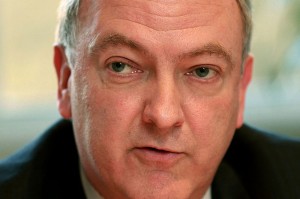Following reviews of 14 hospitals with consistently high mortality rates, health secretary, Jeremy Hunt, has said that failure and mediocrity is ‘entrenched’ in 11 of the 14, which will be put into ‘special measures’.
The reviews, commissioned by the Prime Minister, were led by Sir Bruce Keogh, Medical Director of NHS England. Sir Bruce found that, while there were some examples of good care, none of the 14 hospitals investigated was providing consistently high quality care to patients.
Mr Hunt said: “I can announce that 11 hospitals will be placed into special measures to improve patient care. This means that they must implement all of the recommendations and external support will be provided to help them do this. The quality of leadership will be assessed and any senior managers who are not up to the job will be removed. And each hospital will be partnered with high performing NHS organisations to act as mentors.
“Under the new rigorous inspection regime led by the Chief Inspector of Hospitals, if a hospital is not performing as it should, the public will be told. If a hospital is failing, it will be put into special measures with a limited time period to sort out its problems.”
The 14 hospital trusts, between them, are said to have been responsible for up to 13,000 ‘excess deaths’ since 2005.
However, Labour Shadow Health Secretary Andy Burnham said that ‘nowhere’ in the report did the figure appear. It comes following inquiries led by Robert Francis QC into the scandal at Stafford Hospital, where up to 1,200 people were found to have died as a result of poor care between 2005 and 2009. The Keogh Review will show that Stafford was not alone with its failings.
Mr Burnham, who was the last minister in charge of health under the former Labour government, accused the Government of cutting nursing jobs.
He said: “Seven of the 14 hospitals have between them cut a shocking 1,117 nursing jobs on this government’s watch. Unsurprisingly A&E performance has plummeted at all seven.”
In reply, Mr Hunt said: “The Keogh Review is the review Labour never wanted to have.”
Professor Sir Bruce Keogh said: “Higher mortality rates do not always point to deaths which could have been avoided but they do act as a ‘smoke alarm’ indicator that there could be issues with the quality of care. That’s why I was asked to carry out a ‘deep dive’ inspection of the care and treatment being provided by each of these Trusts.
“Not one of these trusts has been given a clean bill of health by my review teams. These reviews have been highly rigorous and uncovered previously undisclosed problems. I felt it was crucial to provide a clear diagnosis, to write the prescription, and, most importantly, to identify what help these organisations might need to support their recovery or accelerate improvement.
“Mediocrity is simply not good enough and, based on the findings from this review I have set out an achievable ambition which will help these hospitals improve dramatically over the next two years.
“As a result of the reviews, the NHS Trust Development Authority and Monitor have today placed all 14 Trusts on notice to fulfill all the recommendations made by the review about their hospitals. All will be inspected again within the next year by the new Chief Inspector of Hospitals, Professor Sir Mike Richards, who starts work today.”
Being placed into ‘special measures’ will mean that:
• Each hospital will be required to implement the recommendations of the Keogh review, with external teams sent in to help them do this. Their progress will be tracked and made public;
• The Trust Development Authority or Monitor will assess the quality of leadership at each hospital, requiring the removal of any senior managers unable to lead the improvements required; and
• Each hospital will be partnered with high-performing NHS organisations to provide mentorship and guidance in improving the quality and safety of care.
Since 2010, each of the Trusts has seen substantial changes to its management, including a new chief executive or chair at nine of the 14. However, while some have improved, others have failed to do so, making today’s additional measures necessary.
Three of the 14 hospitals are not going into special measures. They are Colchester Hospital University NHS Foundation Trust, The Dudley Group NHS Foundation Trust and Blackpool Teaching Hospitals NHS Foundation Trust. Whilst there were still concerns about the quality of care provided, the Foundation Trust regulator, Monitor, has confidence that the leadership teams in place can deliver the recommendations of the Keogh review.
As well as specific action to support the 14 hospital Trusts, the Government will also legislate to make sure it will be no longer possible for failed managers to get new jobs elsewhere in the NHS. And, drawing inspiration from education where Super-Heads have helped to turn failing schools into outstanding ones, the NHS Leadership Academy will develop a programme that will identify, support and train outstanding leaders.
Jeremy Hunt said: “In its 65th year this government is deeply proud of our NHS.”
He said doctors and nurses had never worked harder and that the problems were not typical of the NHS. Mr Hunt added: “The last government left the NHS with a system that covered up weak leadership.
“The last government also failed to prioritise compassionate care. The system’s reputation mattered more than individual patients. Targets mattered more than people.
“We owe it to the three million people who use the NHS every week to tackle abuse, incompetence and weak leadership head on. Mortality rates suggest that since 2005 thousands more may have died than would be expected at the 14 trusts reviewed by Sir Bruce.
“Each of the trusts has seen substantial changes to its management since 2010. Failure and mediocrity is so entrenched in others that they have continued to decline.”
Sir Bruce has also set out a vision for where the NHS can get to within two years. This includes:
• Making demonstrable progress to reducing avoidable deaths in hospitals
• Patients and clinicians will have confidence in the quality of assessments made by the CQC, not least because they will have been active participants in inspections
• No hospital will be an island – professional, academic and managerial isolation will be a thing of the past
• Nurse staffing levels and skill mix will appropriately reflect the caseload and the severity of illness of the patients they are caring for and be transparently reported by Trust boards
• Patients will not just feel like they have been listened to but will be able to see how their feedback is impacting on their own care and the care of others
The review was commissioned after Sir Brian Jarman of Imperial College London, one of Professor Sir Bruce Keogh’s advisers, found that in some cases the high death rates stretched back to 2005.
Sir Brian said that he repeatedly warned the Department of Health over the course of a decade about the high death rates but was not listened to.
He said: “We felt we were banging against a locked door. They were denying out data even though there was no real reason. At the time there was pressure from Downing Street and pressure from ministers.
“The government was in the position of providing the health service and monitoring it, it was a conflict of interest. Ministers have an electoral interest in getting out good news.”
At the worst hospital, Basildon and Thurrock University Hospitals NHS Foundation Trust, there were 1,600 more deaths than would have been expected over the past seven years.
At Tameside, which is about half the size of Basildon, there were more than 830 excess deaths. Christine Green, its chief executive, and Tariq Mahmood, its medical director, resigned just over a week ago ahead of the publication of the report. Several board members have also resigned.
The 14 hospital trusts with the worst mortality rates were: Basildon and Thurrock in Essex; United Lincolnshire; Blackpool; The Dudley Group, West Midlands; George Eliot, Warwickshire; Northern Lincolnshire and Goole; Tameside, Greater Manchester; Sherwood Forest, Nottinghamshire; Colchester, Essex; Medway, Kent; Burton, Staffordshire; North Cumbria; East Lancashire; and Buckinghamshire Healthcare.









